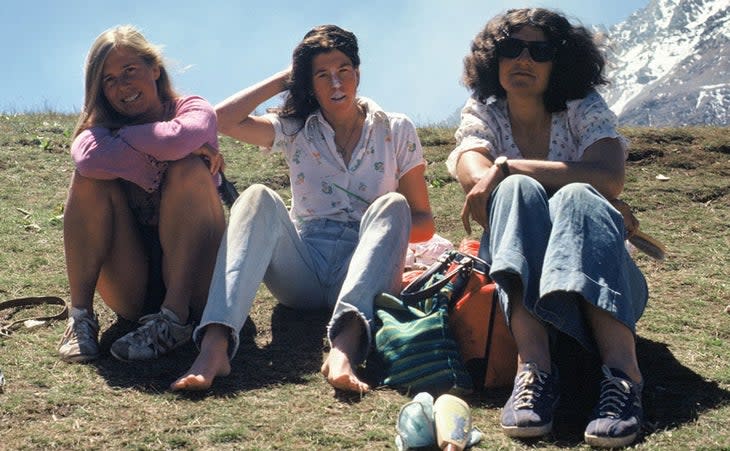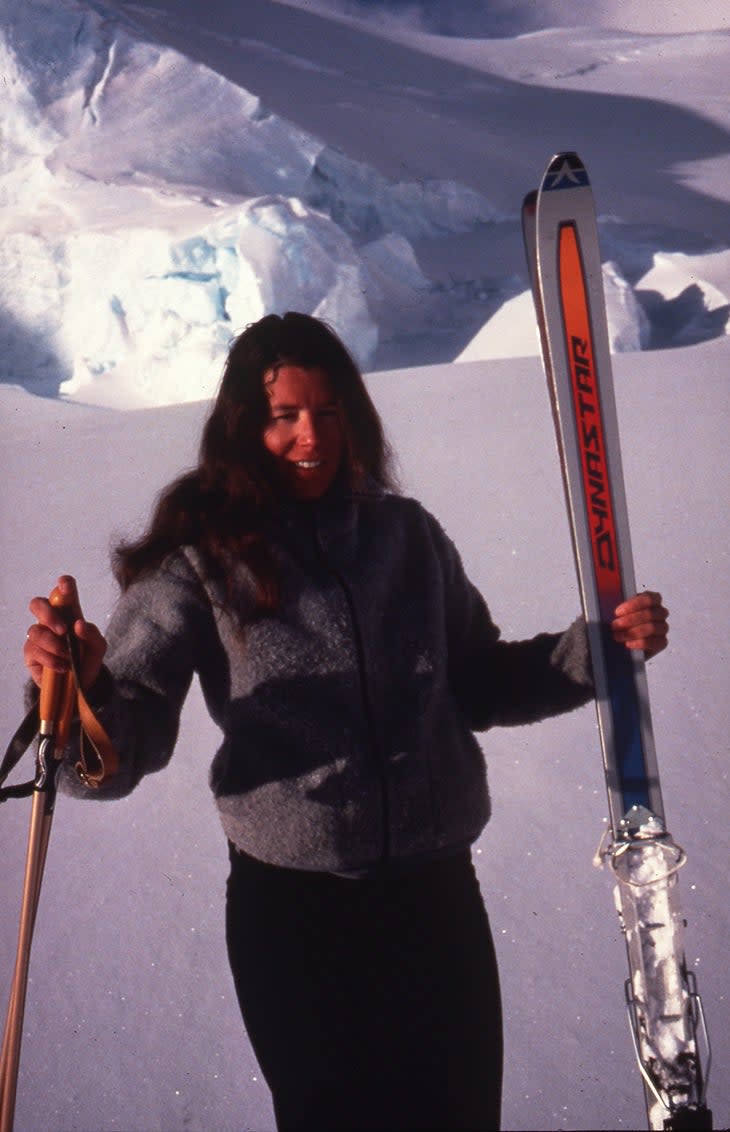Marty Hoey Might Have Been First American Woman to Climb Everest. Then She Fell From Sight.
- Oops!Something went wrong.Please try again later.
This article originally appeared on Climbing
Forty years ago this month, somewhere above 8000 meters on Everest North Face, Marty Hoey, who would likely have become the first American woman to climb Everest, fell from sight. She was never seen again.
As Jim Wickwire, who was beside her when she leaned back and then detached from a fixed rope, wrote in the American Alpine Journal, "A day or two later, she would have stood a very good chance of becoming the first woman from this country to reach the summit."

The expedition was the first American group to attempt Everest from the north in decades, product of an evolving detente with China, which had closed Tibet in general and climbing specifically to Westerners. Though the attempt ended in tragedy, the team helped reopen the doors to exploration and mountaineering in Tibet.
The team members were among the top U.S. mountaineers of the era. Marty Hoey, age 31, who did not come home, deserves particular remembrance for who she was and the path she pioneered.
Marty was charismatic, fun-loving, a person of ethics and integrity. She loved Mount Rainier and took great pride in being a member of Rainier Mountaineering Inc, had deep respect for her friend and mentor Lou Whittaker, and had a great affinity for her fellow guides. She climbed Rainier over 100 times and was a Denali guide for RMI; she was also a veteran of the 1974 USSR-USA Pamir Expedition, during which she climbed Pik Lenin, and the 1976 Indo-American Nanda Devi Expedition. These major expeditions were marred by tragedy, well-documented in the AAJ and elsewhere. The events did not diminish her love of high mountains, only added to her respect.
In her "off season," Marty worked with the ski patrol and avalanche teams of Snowbird, Utah, where we were friends and coworkers on the mountain and in avalanche and rescue operations.

Marty loved horses, playing squash, and literature. Her favorite novel was The Magic Mountain, by Thomas Mann. She loved classical music; groups of us would attend concerts at the Mormon Tabernacle.
Socially, she was a very warm, engaging person. She was inquisitive, with a keen intellect, but not superior or condescending. Anyone could be her friend, and I don't think she had enemies.
While she was generally respectful of others and their pursuits, I remember that she was perplexed by the fly-fishing culture of the northern Rockies, and the effort and money put into catching and releasing a fish. "How hard can it be to outsmart a trout?" she once asked me. "How big is a trout brain?" I said nothing, not sharing that trout usually outsmarted me.
In the mountains Marty was very focused, highly professional. She worked hard at her craft both as climber and guide. Beyond mountain tech skill she had something more important--judgment. In the late 1970s some in our extended circle of patrollers and mountaineers took up climbing and skiing steep couloirs. Marty heard of our adventures, wanted to play and popped an idea on us: to ski the Gibraltar Chute, a steep 3000-foot chute between Gibraltar Rock and the headwall of the Nisqually Glacier on Rainier. A small team formed a plan around her idea, and traveled to the mountain and up to Camp Muir. We planned a predawn start, intending to traverse under Gibraltar Rock, climb the chute, and ski it, based upon firsthand knowledge. We thought we might attempt the Rainier summit first, and if the couloir wasn't right, ski down another glacier route.
The night of our attempt was beautiful, except for intensifying wind. We placed our skis on our packs, then in crampons started up in two rope teams. The rocks began hurling down as we moved, steadily ascending in open steep terrain with nowhere to go but up. Marty was hit on the arm; I was hit in the neck.
Our teams caught up for a brief pause and, new to glacier travel, I suggested escaping the rockfall from Gibraltar by traversing towards the Nisqually Glacier. It was the middle of the night, with everything frozen. Marty said no, that in her view the immediate hazard we were navigating was less than the potential hazard of traveling under the seracs of Nisqually Headwall. I assented. Shortly after our chat, as if on cue, with a huge roar, a massive icefall peeled away, producing one of the largest avalanches I have ever seen, onto the terrain I had suggested.
We finished the Gibraltar Chute, skipped the summit in those winds, and avoided the chute, too, as too frozen for our edges. We took an alternate glacier route down, a beautiful descent.
Marty died on May 15, 1982, when she slipped out of her harness, not having fully doubled it back in its buckle (harnesses today have auto-locking buckles, but formerly had to be manually double threaded).
Her companion Jim Wickwire wrote in his memoir Addicted to Danger (1998): “I heard a sudden pinging sound and turned my head to see Marty pitching backward, head-down the icy slope.” She rolled onto her side and tried to grab the rope, but slid past it and disappeared into the mist and over a vast ice cliff. “Not once,” Wickwire wrote, “did she cry out.”
Reinhold Messner has compiled reports from survivors of bad falls saying they did not feel the fall or impact. The idea offers comfort: that those who take fatal falls are spared final mortal suffering. We hope that Marty did not feel her fall … but her mother, her father, her friends and the climbing world surely did.
See also:
Rising: Becoming the First North American Woman to Climb Everest, excerpting the memoir by Sharon Wood (CAN), and with an introduction describing the long-drawn-out race to put an American woman on Everest that followed in the years after Hoey’s attempt.
You can see the film of the 1982 expedition, Everest North Wall, free of charge here.
For exclusive access to all of our fitness, gear, adventure, and travel stories, plus discounts on trips, events, and gear, sign up for Outside+ today.

